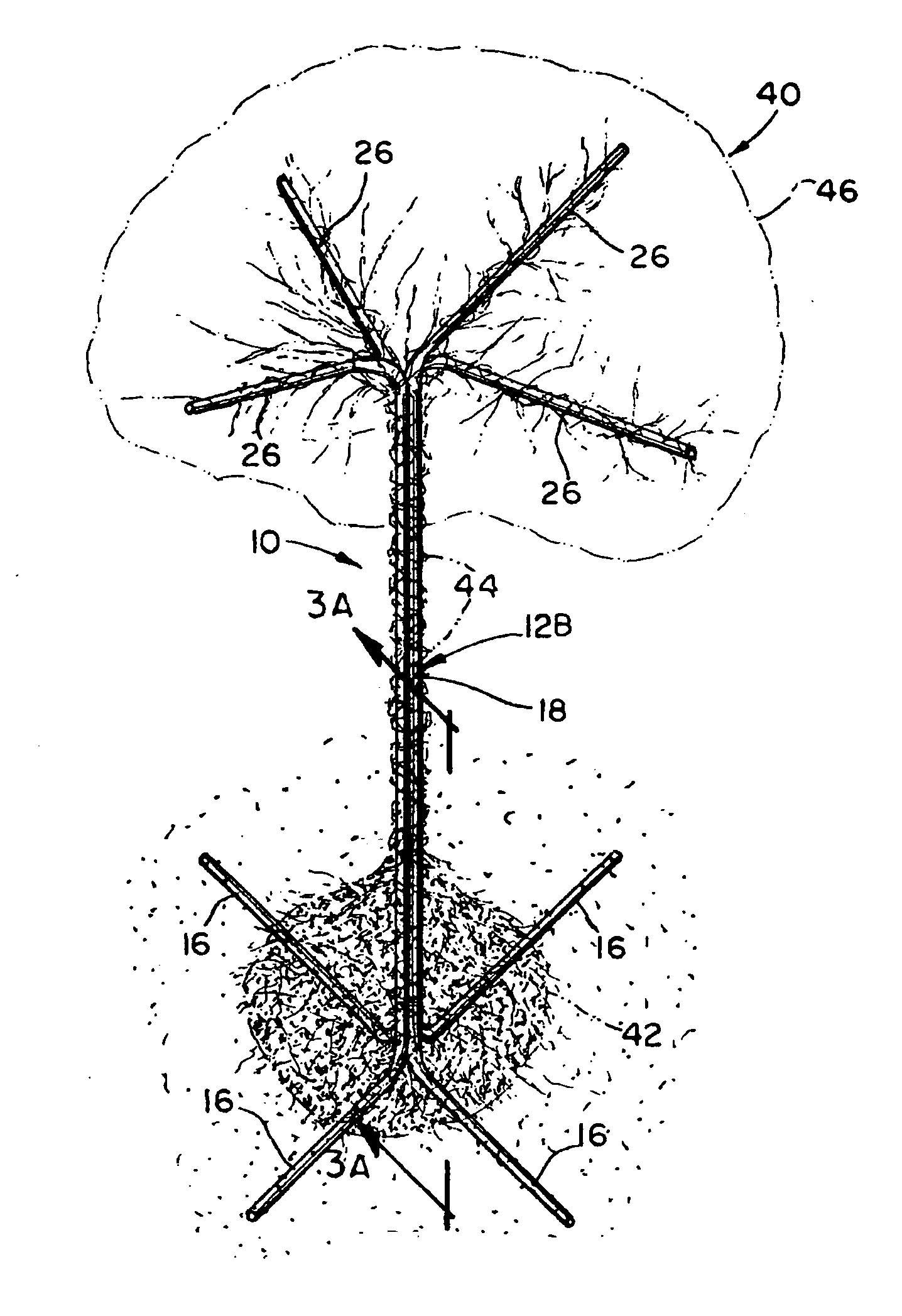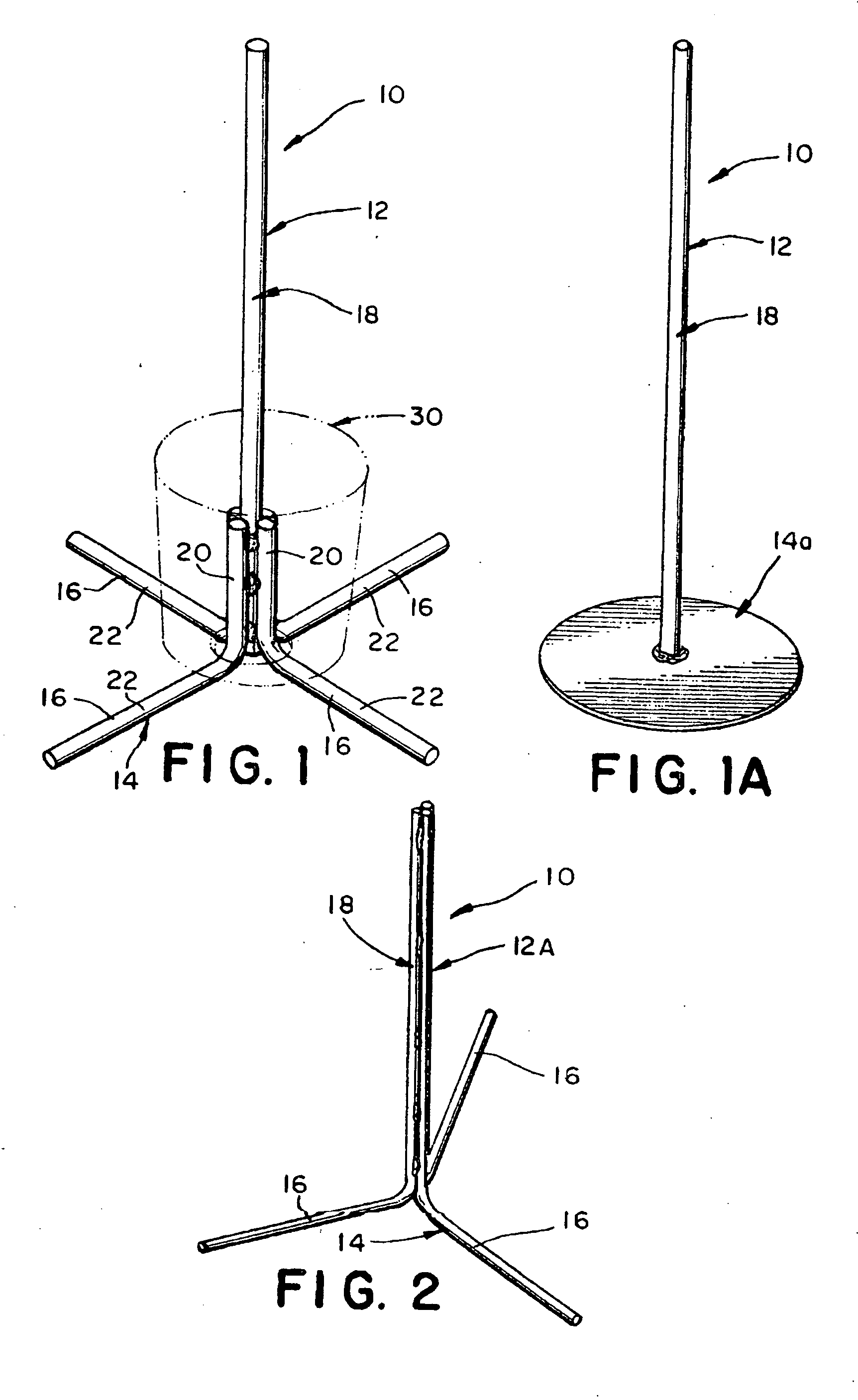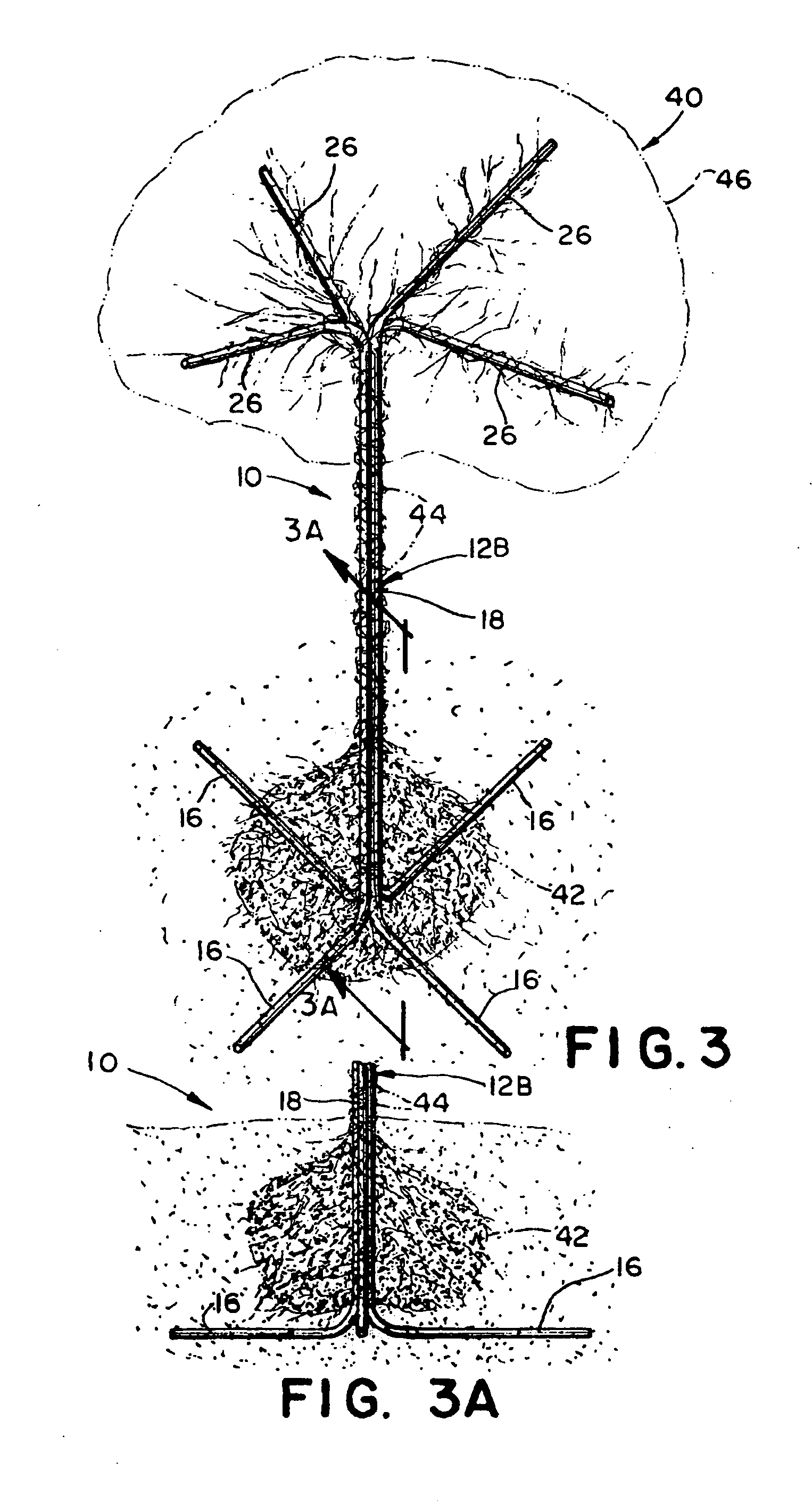Permanent underground staking system and apparatus for vines and weakly rooted trees
a technology of underground staking and vines, applied in the field of staking systems, can solve the problems of weak or shallow root systems, inability to provide adequate support, and tree leaning to one side, and possibly falling to the ground
- Summary
- Abstract
- Description
- Claims
- Application Information
AI Technical Summary
Benefits of technology
Problems solved by technology
Method used
Image
Examples
Embodiment Construction
[0024] Referring to the several views of the drawings, the permanent underground staking apparatus of the present invention is shown in accordance with several embodiments thereof, and is generally indicated as 10 throughout the drawing figures.
[0025] In each of the embodiments, the staking apparatus includes a rigid staking structure 12 having a base 14 and a vertical extension 18 extending upwardly from the base. In several preferred embodiments of the invention, the base is formed by a plurality of legs 16. As seen in the several drawing figures, the legs 16 are preferably perpendicular to the vertical extension 18 and extend outward, generally horizontally, at spaced intervals. It is preferable that the rigid staking structure have at least 3 legs. FIG. 2 shows an example of the base formed with 3 legs, while the embodiments of FIGS. 1 and 3 illustrate a base having 4 legs equally spaced from one another. In a preferred embodiment, the entire rigid staking structure 12 is forme...
PUM
 Login to View More
Login to View More Abstract
Description
Claims
Application Information
 Login to View More
Login to View More - R&D
- Intellectual Property
- Life Sciences
- Materials
- Tech Scout
- Unparalleled Data Quality
- Higher Quality Content
- 60% Fewer Hallucinations
Browse by: Latest US Patents, China's latest patents, Technical Efficacy Thesaurus, Application Domain, Technology Topic, Popular Technical Reports.
© 2025 PatSnap. All rights reserved.Legal|Privacy policy|Modern Slavery Act Transparency Statement|Sitemap|About US| Contact US: help@patsnap.com



